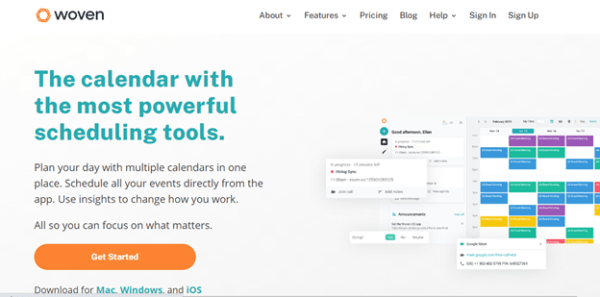Do you want to manage remote employees effectively?
It’s usually exciting to take on your first remote team members. Perhaps, existing employees are going remotely to adapt to the new culture, and you were hired to manage them.
Remote work is gaining a lot of attention lately. According to Global Workforce Analytics, “in the United States, remote work has risen by 173% between 2005 and 2018,” and 18% of people work remotely full-time.”
According to Naval Ravikant, an Angel Investor and founder of AngelList, “remote work is the future we all must get ready for.”
Trust me, it takes more than experience to manage a fully distributed team. Some challenges come with it.
Today, it’s easier to manage people you work side by side with than managing a remote team.
All of the things that work in an office setting don’t always translate exactly to a remote team. But your efforts will be well worth it if you learn the ropes.
Use these 6 tips to effectively manage remote workers:
1. Set New Working Standard
When you have responsibility for managing a remote team, it’s important to define the new working environment and what’s obtainable. What’s the new arrangement like between you and the workers?
You can start by documenting what your communication strategy will be. Also, you need to provide some flexibility as to when, how, and when they work.
For example, do you want remote workers to send reports and feedback every day or week? How should they share reports: email or via a collaboration tool?
Also, if you have a YouTube channel or blog, you can kill two birds with one stone: Instead of ‘just’ using your content to generate leads and customers, also use it to educate your new remote workers about your core principles, your USP, your products and services and so on.
A favorite example of mine is iNECTA, a food ERP company. They took it even a step further and created their own ‘University’ (different training in the form of online courses) which onboards their new team members as smoothly as possible.

You need to define the new normal so that remote workers are well-equipped to work smarter.
2. Use the Right Communication Methods
There are different ways to communicate with remote workers. In-person communication might not work in remote setups.
Online jobs, in particular, require a different style of communication.
If you fail to use the right communication methods, you’ll leave teams in the dark about the current project. It’ll be difficult to know who is working on what task, what the managers expect, especially if you’re going to assign new responsibilities to people.
Use a scheduling app such as Woven to organize your calendar, work smarter, and get a job done on time.

Talking of new responsibilities, if a sales manager is now in charge of paid ads and driving organic growth, then a new way to communicate with the team must be clearly defined.
If you do this, people will not face challenges in new work environments. It can make people feel insecure about their new roles.
Effective communication is important when working with remote workers. There’s bound to be anxiety, but you can reduce it by setting schedules, defining projects, and making deadlines visible to the entire team.
3. Prioritize Every Talk
There’s a better way to manage remote workers. It might seem obvious but it’s critical. This approach goes beyond merely discussing what needs to be done, it should also include small talks that may not seem obvious.
When you do this, every remote worker in your team will feel a sense of belonging. They will listen to you and ensure that tasks are delivered on time.
Data shows that 77% of remote employees are more productive when working from home. Hence, about 60% of companies are excited about remote work.

While focusing on discussions that are fundamental to your growth, you shouldn’t end at that. A critical part of your management procedure is building rapport with every member of your team.
Regardless of how major or minor their challenges/issues may be, building rapport will help you handle issues that each team member has.
Spend adequate time listening to your team members. Although some challenges may be urgent, don’t neglect other issues from remote workers. Prioritize accordingly.
4. Engage Remote Workers with Videos
When you communicate with remote workers through videos, you have the rare chance of explaining complex or complicated issues.
Given that more than 50% of human communication is nonverbal, people want to connect and engage with multimedia information.
Since you’ll not be meeting with team members in the office every day, using visual clues to explain a topic or task is vital.
Such videos don’t have to be overly formal or corporate, it could be as simple as success story-type videos. My favorite example is How Infinite Recovery, a Texas Rehab Center creates videos sharing success stories and uses them to engage its team.

It doesn’t matter whether you’re trying to gauge their reaction to a change you made, or just trying to know their overall mood that day, videos convey a lot of emotions than audio-only calls or even chat.
There’s a ton of video solutions out there that you can use, such as Google Hangout, Zoom, and Skype. Better yet, use one of the best webinar platforms like WebinarJam or GoToMeeting to educate, inform, and inspire your team.
Start bonding with remote workers by switching to video, without neglecting emails, audio, and calls.
5. Allow 30 Minutes To 1 Hour Break Each Day
Making a transition from working in an office setting every day to working from home isn’t always a smooth ride.
When managing remote workers, regardless of where they are working, remind them that it’s OK to take 30 minutes to 1-hour break each day.
Based on research, the top 10% of productive employees tend to work, on average, 52 minutes before they take a break. It’s well illustrated in the One Pomodoro Cycle.

Contrary to what they might think, the truth is that they don’t have to stay glued to their desks or makeshift workspaces all the time. There should be time for a break.
Taking a break re-energizes them. It promotes productivity and gives team members a chance to step back and reminisce on the given task.
If a remote worker is working on keywords research, for example, after uncovering the competitor’s top keywords, they can take a break, then come back with a new set of ‘insights’ and analyze the keyword difficulty.
Never forget all of the human interaction you enjoy while working in an office environment.
Oftentimes, we get up from our desks to have a cup of coffee and even casually chat with one or two coworkers. All of these activities are ‘breaks’ that helps us produce our best output.
Although it’s hard to replicate all of the experiences we enjoy in the office environment, now that we’re working remotely, however, you need to give yourself some time to think. It’s essential for your mental health and productivity in a remote working space.
6. Convey Emotions with Animated Gifs, Icons, And Emoticons
Videos are a powerful means of communication. However, you may not have the right ideas or expensive equipment to create high-quality videos.
In this case, you can use animated gifs and emoticons to convey emotions when managing a remote team. Use these elements in every online learning resource you create, even in your blog posts and emails.

In non-verbal communication, written works and audio have their limitations. It’s difficult to communicate how you feel about something.
Words alone can be misrepresented or misunderstood. It can come across as more aggressive, or not as helpful as you may like.
Gifs are used in visual storytelling. You can get animated gifs from platforms like giphy.com and Icon8.com, and send messages that captivate and praise your team members. This also works when posting on Instagram or Twitter.
You’ll notice that your team members are responding better. The rapport is getting stronger and they are bonding with you quickly and smoothly.
Instead of emailing a remote worker and saying, “Amazing job,” why not use an emoticon or a gif?
Diffuse your emails by including an emoticon at the end to show you’re human, you’re ready to listen, and you care about your team — regardless of where they’re working from.
Conclusion
Truly, it’s not an easy task to manage remote workers. But it can be fun if you know what to do at any given time.
Get to know your team members personally. No, you don’t have to meet them in-person — but go the extra mile to enquire about their family, lifestyle, work ethics, hobbies, etc.
You can create strong engagement with remote workers from the comfort of your home office. You may need to practice the tips above multiple times to master them.
As time goes on, you’ll discover that your remote workers are more excited, effective, and productive than those working in the physical office daily.
- How to Manage Your (Newly) Remote Workers (A Guide For 2021) - January 19, 2021




Comments are closed.